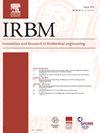模拟活体组织电学性能和机械强度的模型研究进展
IF 5.6
4区 医学
Q1 ENGINEERING, BIOMEDICAL
引用次数: 0
摘要
目的幻影在成像设备校准或传感器验证等研究中越来越受到青睐。它们在测量可重复性和再现性、长期稳定性、成本效益、易于存储以及没有伦理问题方面提供了显著的优势。这篇综述的目的是分析用于开发复制人体组织电学特性的幻影的材料和制造技术,同时确保相当的机械强度。材料和方法为了建立相关的设计标准和定义鬼怪制造的要求,对生物组织的电气和机械特性进行了初步审查,并对生物阻抗等测量技术进行了分析。然后对文献进行了全面的回顾,以评估各种幻影材料,包括本质上的仿生材料,天然和合成聚合物,重点关注它们的电气和机械性能,长期稳定性和环境影响。此外,根据实验要求,该综述考虑了这些幻影是拟人化的,是为了模仿人体解剖结构而设计的,还是简化的。包括蔬菜和动物肉在内的生物材料具有接近人体组织的电性能,但受到时间的快速降解和潜在伦理问题等问题的限制。天然聚合物,如胶凝剂,很容易使用,然而,它们需要稳定剂和填料来提高稳定性和电性能。与活组织相比,这些聚合物表现出较低的机械强度。合成材料,包括有机硅和弹性体,提供卓越的机械强度,但需要填料来模拟电性能。其中,聚乙烯醇(PVA)作为一种环保替代品脱颖而出。结论材料的选择需要在机械性能、电学性能和环境因素之间进行权衡。可持续材料的进步为改进幻影设计提供了有希望的方向。本文章由计算机程序翻译,如有差异,请以英文原文为准。
Review of Phantoms for Mimicking the Electrical Properties and Mechanical Strength of Living Tissue
Objectives
Phantoms are increasingly preferred and essential in research for applications such as imaging device calibration or sensor validation. They offer significant advantages in terms of measurement repeatability and reproducibility, long-term stability, cost effectiveness, ease of storage, and the absence of ethical concerns. This review aims to analyse the materials and fabrication techniques used to develop phantoms that replicate the electrical properties of human tissues while ensuring comparable mechanical strength.
Materials and Methods
To establish relevant design criteria and define the requirements for phantom fabrication, a preliminary review of the electrical and mechanical properties of biological tissues was conducted, along with an analysis of measurement techniques such as bioimpedance. A comprehensive review of the literature was then performed to assess various phantom materials, including intrinsically biomimetic materials, natural and synthetic polymers, with a focus on their electrical and mechanical properties, long-term stability, and environmental impact. Additionally, the review considered whether the phantoms were anthropomorphic, designed to closely mimic human anatomy, or simplified, depending on the experimental requirements.
Results
Biological materials, including vegetables and animal flesh, possess electrical properties that approximate those of human tissues but are limited by issues such as rapid degradation over time and potential ethical concerns. Natural polymers, such as gelling agents, are easy to use, however, they require stabilisers and fillers to enhance stability and electrical properties. These polymers exhibit reduce mechanical strength in comparison to living tissues. Synthetic materials, including silicones and elastomers, offer superior mechanical strength but require fillers to mimic electrical properties. Among these, polyvinyl alcohol (PVA) stands out as an environmentally friendly alternative.
Conclusion
The selection of materials for phantom fabrication involves a trade-off between mechanical performance, electrical properties and environmental considerations. Advances in sustainable materials offer promising directions for improving phantom design.
求助全文
通过发布文献求助,成功后即可免费获取论文全文。
去求助
来源期刊

Irbm
ENGINEERING, BIOMEDICAL-
CiteScore
10.30
自引率
4.20%
发文量
81
审稿时长
57 days
期刊介绍:
IRBM is the journal of the AGBM (Alliance for engineering in Biology an Medicine / Alliance pour le génie biologique et médical) and the SFGBM (BioMedical Engineering French Society / Société française de génie biologique médical) and the AFIB (French Association of Biomedical Engineers / Association française des ingénieurs biomédicaux).
As a vehicle of information and knowledge in the field of biomedical technologies, IRBM is devoted to fundamental as well as clinical research. Biomedical engineering and use of new technologies are the cornerstones of IRBM, providing authors and users with the latest information. Its six issues per year propose reviews (state-of-the-art and current knowledge), original articles directed at fundamental research and articles focusing on biomedical engineering. All articles are submitted to peer reviewers acting as guarantors for IRBM''s scientific and medical content. The field covered by IRBM includes all the discipline of Biomedical engineering. Thereby, the type of papers published include those that cover the technological and methodological development in:
-Physiological and Biological Signal processing (EEG, MEG, ECG…)-
Medical Image processing-
Biomechanics-
Biomaterials-
Medical Physics-
Biophysics-
Physiological and Biological Sensors-
Information technologies in healthcare-
Disability research-
Computational physiology-
…
 求助内容:
求助内容: 应助结果提醒方式:
应助结果提醒方式:


